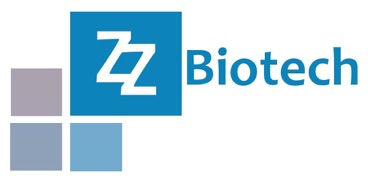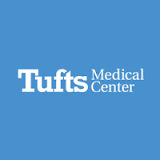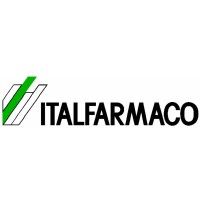预约演示
更新于:2025-05-07
PAR-1
更新于:2025-05-07
基本信息
别名 CF2R、coagulation factor II (thrombin) receptor、Coagulation factor II receptor + [9] |
简介 High affinity receptor that binds the activated thrombin, leading to calcium release from intracellular stores (PubMed:1672265, PubMed:8136362). The thrombin-activated receptor signaling pathway is mediated through PTX-insensitive G proteins, activation of phospholipase C resulting in the production of 1D-myo-inositol 1,4,5-trisphosphate (InsP3) which binds to InsP3 receptors causing calcium release from the stores (By similarity). In astrocytes, the calcium released into the cytosol allows the Ca(2+)-dependent release of L-glutamate into the synaptic cleft through BEST1, that targets the neuronal postsynaptic GRIN2A/NMDAR receptor resulting in the synaptic plasticity regulation (By similarity). May play a role in platelets activation and in vascular development (PubMed:10079109). Mediates up-regulation of pro-inflammatory cytokines, such as MCP-1/CCL2 and IL6, triggered by coagulation factor Xa (F10) in cardiac fibroblasts and umbilical vein endothelial cells (PubMed:30568593, PubMed:34831181). |
关联
18
项与 PAR-1 相关的药物靶点 |
作用机制 F2R拮抗剂 |
在研适应症 |
最高研发阶段批准上市 |
首次获批国家/地区 美国 |
首次获批日期2014-05-08 |
靶点 |
作用机制 F2R拮抗剂 |
在研适应症 |
最高研发阶段临床2期 |
首次获批国家/地区- |
首次获批日期1800-01-20 |
作用机制 F2R激动剂 [+1] |
在研机构 |
原研机构 |
在研适应症 |
最高研发阶段临床1期 |
首次获批国家/地区- |
首次获批日期1800-01-20 |
47
项与 PAR-1 相关的临床试验NCT05484154
A Phase 3 Study to Evaluate the Efficacy and Safety of 3K3A-APC in Combination with Tissue Plasminogen Activator, Mechanical Thrombectomy, or Both in Subjects with Moderate to Severe Acute Ischemic Stroke
The purpose of this study is to evaluate the efficacy and safety of intravenous doses of 3K3A-APC, a recombinant variant of human activated protein C (APC), in the treatment of acute ischemic stroke following treatment with thrombolysis, mechanical thrombectomy or both.
开始日期2024-10-01 |
申办/合作机构  ZZ Biotech LLC ZZ Biotech LLC [+4] |
NCT06441916
A Single Dose, Randomized, Open-label, Two-treatment, Four-period, Two-sequence, Replicate Crossover Bioequivalence Study of Generic Dabigatran Etexilate Capsules 150 mg and Reference Product (Pradaxa®) in Healthy Thai Volunteers Under Fasting Conditions and Under Pre-treatment With a Proton Pump Inhibitor
The bioequivalence of Dabigatran Etexilate Capsules 150 mg to Boehringer Ingelheim's Pradaxa® will be assessed by a statistical comparison of various pharmacokinetic parameters derived from the plasma concentration-time curves of free dabigatran and total dabigatran.
开始日期2024-09-25 |
申办/合作机构 |
NCT05492318
Open-label, Single-center Study in Healthy Subjects to Investigate the Effect of Oral Givinostat on Pharmacokinetics (PK) of Intravenous and Oral Midazolam and Oral Dabigatran Etexilate (PART 1)
Primary objective:
1. To assess the potential inhibitory and inducing effect of oral givinostat on the single dose pharmacokinetics (PK) of intravenous or oral midazolam.
2. To assess the potential inhibitory and inducing effect of oral givinostat on the single dose PK of oral dabigatran etexilate.
Secondary objective:
To assess the safety and tolerability of concomitant administration of givinostat plus midazolam and dabigatran etexilate.
1. To assess the potential inhibitory and inducing effect of oral givinostat on the single dose pharmacokinetics (PK) of intravenous or oral midazolam.
2. To assess the potential inhibitory and inducing effect of oral givinostat on the single dose PK of oral dabigatran etexilate.
Secondary objective:
To assess the safety and tolerability of concomitant administration of givinostat plus midazolam and dabigatran etexilate.
开始日期2022-03-21 |
申办/合作机构 |
100 项与 PAR-1 相关的临床结果
登录后查看更多信息
100 项与 PAR-1 相关的转化医学
登录后查看更多信息
0 项与 PAR-1 相关的专利(医药)
登录后查看更多信息
4,361
项与 PAR-1 相关的文献(医药)2025-05-01·Biochimie
Interaction and cleavage of cell and plasma proteins by the platelet-aggregating serine protease PA-BJ of Bothrops jararaca venom
Article
作者: Morone, Mariana S L C ; Cajado-Carvalho, Daniela ; Serrano, Solange M T ; da Rós, Nancy
2025-05-01·Neoplasia
Targeting PAR1 activation in JAK2V617F-driven philadelphia-negative myeloproliferative neoplasms: Unraveling its role in thrombosis and disease progression
Article
作者: Uslu-Biçak, İldeniz ; Sözer, Selçuk ; Nalçaci, Meliha
2025-05-01·International Immunopharmacology
Cathepsin S: A key drug target and signalling hub in immune system diseases
Review
作者: Skaria, Tom ; Geetha, Durga
19
项与 PAR-1 相关的新闻(医药)2025-03-06
·小药说药
-01-
导读
GPCR(G Protein-Coupled Receptor),即G蛋白偶联受体,是哺乳动物基因组中最大的膜蛋白家族,广泛分布于中枢神经系统、免疫系统、心血管、视网膜等器官和组织,参与机体的发育和正常的功能行使。而如果与其相关的细胞内通路调节发生异常,或者外源病原物以之为受体攻击机体细胞,则会导致一系列疾病的发生。因此,GPCR被视为重要的药物开发靶点,GPCR的药物研发具有非常重要的价值。
-02-
GPCR简介
G蛋白偶联受体(GPCR)是真核生物中最大的膜蛋白家族,具有七次跨膜α螺旋结构。其N端和三个胞外环参与配体结合,而C端和胞内环(尤其是第三个环)介导下游信号传导。GPCR通过两种主要途径传递信号:一是依赖G蛋白(如Gs、Gi/o、Gq/11等),激活后产生第二信使(如cAMP、Ca²⁺);二是非依赖途径(如β-arrestin介导的Src/激酶活化)。
针对GPCR超家族的成员,有多种不同的分类方法,比较流行的有两种:一是A-F分类系统,面向所有生物体内的GPCR蛋白;另一种是根据序列相似性和功能相似性,将GPCR分为Glutamate, Rhodopsin, Adhesion, Frizzled/Taste2, Secretin等5类(缩写为GRAFS),绝大部分人源GPCR可被归类其中。
Rhodopsin家族(Class A):最大类别,N端较短,配体直接结合跨膜区或通过胞外环间接作用,包括胺类(如多巴胺、组胺受体)、多肽类(如内皮素受体)等。该家族可被进一步分为α、β、γ和δ亚类。α亚类的成员包含多种重要的胺类和小分子化合物的受体,包括组胺受体、多巴胺受体、大麻素受体等。β亚类包含多种多肽受体,如内皮素受体、催产素受体等。γ亚类中较受关注的一类受体是趋化因子受体家族,其他的成员包括一些趋化素受体、神经肽受体等。δ亚类包括一些糖蛋白受体和嗅觉相关的受体等。总体来讲,Rhodopsin受体家族成员比较复杂,很难基于结构、功能、表达分布等单一特点进行分类。
Secretin家族(Class B1):胞外区域较大,成员为多肽激素受体(如分泌素受体)。
Adhesion家族(Class B2):结构与Class B1类似,但多数成员的天然配体尚未明确。
Glutamate家族(Class C):具有较大的N端二聚体结构,成员包括代谢型谷氨酸受体、GABA受体、钙敏感受体及味觉受体(如甜/鲜味受体TAS1R)。
Frizzled/Taste2家族(Class F):分为两个亚类,Frizzled/Smoothened:结合Wnt蛋白或通过Hedgehog通路传递信号;Taste2:苦味受体及一些孤儿受体。
GPCR激活后通过构象变化(如磷酸化)招募β-arrestin,调控受体内吞或信号终止。此外,GPCR的亚细胞定位(如核膜)可影响其信号特异性。药物开发中,约370个GPCR为潜在靶点,现有药物以调节G蛋白或β-arrestin通路为主。
-03-
GPCR的信号通路
G蛋白偶联受体(GPCR)是人体最大的跨膜受体家族,通过感知光、激素、神经递质等信号,调控约80%的生理过程。其信号传递具有高度动态性和复杂性,核心路径可分为G蛋白依赖性通路和β-arrestin依赖性通路,同时受多种调控机制影响。
G蛋白依赖性通路
GPCR通过与G蛋白相互作用来传递信号。G蛋白是由三个亚基组成的异源三聚体:Gα、Gβ和Gγ。当GPCR被配体激活时,会发生构象变化,促使G蛋白α亚基的GDP被GTP取代,进而激活与其偶联的G蛋白。
Gs型:激活腺苷酸环化酶(AC),升高cAMP水平,激活PKA(如肾上腺素受体调控代谢)。
Gi/o型:抑制AC,降低cAMP水平(如阿片受体介导镇痛)。
Gq/11型:激活磷脂酶Cβ(PLCβ),水解PIP₂生成IP₃和DAG,分别触发钙离子释放和PKC活化(如血管紧张素受体调控血压)。
G12/13型:激活RhoGEF,调控细胞骨架重塑(如趋化因子受体驱动细胞迁移)。
β-arrestin依赖性通路
β-arrestin是GPCR信号通路中的重要调节因子,GPCR被G蛋白偶联受体激酶(GRK)磷酸化后,招募β-arrestin结合,介导受体内吞和脱敏,终止G蛋白信号。此外,还激活非经典通路如ERK、JNK激酶级联反应(如CXCR4受体促进肿瘤转移)以及与AP2等衔接蛋白结合,调控膜运输和信号复合物组装。
-04-
GPCR与疾病的关系
GPCR家族在人体内分布广泛,功能复杂,因此与多种疾病的发生和进展过程有所关联,或在其中扮演重要的角色。根据截止到目前的较为清楚的研究,GPCR涉及到的疾病主要分为3大类:癌症、炎症和心血管/代谢疾病。
GPCR与癌症
研究表明,GPCR家族的多种成员参与了各类癌症的发生和进展。激素受体类的GPCR参与了某些激素依赖的癌症。有些蛋白酶激活受体如PAR1,在MMP-1的催化下活化并激活下游信号通路,促进癌细胞的侵袭和恶化。有些趋化因子受体,如CXCR2、CXCR4,在骨髓瘤、淋巴瘤细胞中高表达,也可能高表达在如胰腺癌等实体瘤细胞上,参与细胞的迁移、血管生成等。
GPCR与炎症
趋化因子受体家族主要表达在免疫系统各类细胞上,炎症反应就是由免疫细胞上的趋化因子受体受趋化因子激活后介导免疫细胞发挥宿主免疫功能而产生的一类病理现象。如CXCR1、CXCR2主要表达于中性粒细胞上,当机体某处发生感染或出现损伤时,中性粒细胞会在相应趋化因子(CXCL1、CXCL2、CXCL8)的趋化下向病灶迁移,到达病灶后释放炎症因子,从而产生局部的炎症反应。
GPCR与心血管/代谢疾病
与心血管疾病相关的GPCR成员主要分布于ClassA家族的α亚类,如血管紧张素系统(RAAS)中的AT1R、AT2R以及Mas-R。AT1R受体激活引起血管收缩,细胞增殖迁移、炎症纤维化、心肌再塑和肥厚、钠水潴留和ROS生成等等;而Mas受体激活主导血管舒张、抑制细胞增殖迁移、抗炎症纤维化、抗凝、促EDRF、NO生成、抑制心肌肥厚和生长等等,两者具有相互拮抗的作用,共同维持人体的自稳态。
与代谢疾病相关的GPCR成员主要是分布于ClassA家族中的脂肪酸受体,比如GPR120、GPR41和GPR43等,以及ClassB家族中的Secretin受体家族,包括GLP-1R和GCGR等。胰高血糖素样肽1(GLP-1)通过激活GLP-1R,提高胰岛β细胞的胰岛素分泌水平,从而控制血糖;胰高血糖素(GCG)通过与其受体GCGR结合而被激活,增强肝糖原降解,并调节葡萄糖的从头合成途径,抵抗胰岛素的降血糖作用,从而升高血糖。
除了这3类疾病主要的疾病之外,还有其他疾病被证明与GPCR相关,如:CCR5参与HIV向T细胞的入侵,是治疗艾滋病的一个重要靶点;如降钙素相关基因肽受体CGRPR和其配体CGRP表达于三叉神经元区域,两者的相互作用所激活的下游信号通路被证明与偏头痛相关。
-05-
GPCR药物开发现状目前在北美(美国和加拿大)、欧洲、亚洲(日本、韩国和印度)和澳大利亚的市场上共有516种针对GPCR的不同药物在销售。这些GPCR靶向药物占所有批准药物的约36%。在过去的5年里(自2019年以来),有37种针对GPCR的药物获得了新的批准,其中包括7种首次批准的受体:GIPR、GPRC5D、C5A1、神经激肽-3(NK3)和黑皮质素受体3、4和5(MC3/4/5)。最近批准的是KarXT(Cobenfy),这是一种由M1/M4毒蕈碱乙酰胆碱受体选择性激动剂xanomeline和外周毒蕈碱拮抗剂曲司皮铵联合使用的药物,是精神分裂症的治疗药物。目前共有337种靶向GPCR的药物正在临床试验中,其中172种是新药,165种是正在重新利用的药物。在新的药物中,有51、76和45种分别进入了I、II和III期临床。因此,预计未来几年将有相当多的GPCR药物获得批准。
2023年前50大畅销药物中有5种GPCR靶向产品。其中,产品Entresto(sacubitril/缬沙坦)应用于心力衰竭和高血压。其他四种产品分布在代谢疾病领域的适应症:包括2型糖尿病(semaglutide、dulaglutide和tirzepatide)和肥胖症(semagluide)。tirzepatide也于2023年11月被批准用于治疗肥胖症。
目前只有两种批准的GPCR靶向单克隆抗体,分别是靶向CCR4和CGRP1型受体的mogamulizumab和erenumab。另一种单克隆抗体正处于临床开发的后期阶段,即针对CCR5的leronlimab(或PRO140),现已达到预注册。目前还有多个GPCR的单克隆抗体处于临床1期或2期的开发阶段。值得注意的是,所有这些靶点都有大的肽配体。-06-
GPCR药物的未来发展趋势
GPCR药物开发近年来呈现多维度创新趋势,但仍面临结构生物学限制和选择性挑战。以下是核心进展与方向:
结构生物学驱动药物发现过去5年上市的GPCR药物均基于已解析的受体结构开发,凸显结构信息的关键作用。随着X射线晶体学和冷冻电镜技术进步,变构位点的发现为药物设计开辟新路径,例如靶向受体-脂膜界面变构位点的小分子可克服传统正构药物选择性不足的问题。目前已有18种GPCR与变构分子的共晶结构被解析,为精准设计提供模板。
从正构位点到变构调控的范式转变
约95%已上市GPCR药物靶向正构位点,但该区域在同类受体中高度保守,导致药物交叉激活引发毒副作用。变构调节剂通过结合受体跨膜区或脂膜界面等非保守区域,实现亚型特异性调控。例如,钙感知受体(CaSR)变构调节剂cinacalcet通过“天花板效应”限制药效峰值,显著提高安全性。此外,变构位点不与内源配体竞争,可保留天然信号时空特性,适用于需精细调节的疾病(如神经系统疾病)。
GPCR抗体的崛起抗体药物凭借长半衰期、高选择性和外周分布特性,成为小分子的重要补充。例如,针对外周表达的GPCR开发抗体可规避血脑屏障,减少中枢副作用。目前已有2款GPCR抗体药物上市,临床阶段项目数量显著增加。
靶向受体复合物的新维度GPCR常与受体相关蛋白形成功能复合物,其信号特性与单体受体不同。例如,多巴胺D2受体与腺苷A2A受体异源二聚化可改变配体响应,为帕金森病治疗提供新靶点。此类复合物的组织特异性表达(如特定细胞类型中GPCR与辅助蛋白的共定位)使药物可精准调节病理信号通路,减少脱靶效应。
此外,开发偏向性配体以调控特定信号通路、利用AI预测变构位点结合模式、探索孤儿GPCR的变构成药潜力。这些突破将推动GPCR药物向更高选择性和更低毒性的方向发展。
-06-
结语
GPCR药物开发的历史,是一部人类解码生命信号、攻克疾病的壮丽史诗。从阿司匹林抗炎止痛的偶然发现,到GLP-1受体激动剂改写糖尿病治疗格局,再到靶向CGRP受体单抗开创偏头痛预防新时代,GPCR药物始终站在医学革命的前沿。
目前,针对GPCR的治疗性药物的研发管线和临床试验正在不断扩大。近年来,随着我们对GPCR生物学方面的不断深入研究,可以预见,GPCR作为生命科学的“百年常青树”,将持续解锁细胞信号调控的终极密码。当科学与技术跨越学科的藩篱,人类终将实现从“调控疾病”到“重塑健康”的终极梦想。
参考文献:
1. A review of antibody-based therapeutics targeting G protein-coupled receptors: an update. Catherine J Hutchings. Expert Opin Biol Ther. 2020 Aug;20(8):925-935.
2. Targeting receptor complexes: a new dimension in drug discovery.Nat Rev Drug Discov. 2020 Nov 11.
3. New Binding Sites, New Opportunities for GPCR DrugDiscovery. Trends Biochem Sci. 2019 Apr;44(4):312-330.
4. GPCR drug discovery: new agents, targets and indications. Nat Rev Drug Discov.2025 Mar 3.
公众号内回复“ADC”或扫描下方图片中的二维码免费下载《抗体偶联药物:从基础到临床》的PDF格式电子书!
公众号已建立“小药说药专业交流群”微信行业交流群以及读者交流群,扫描下方小编二维码加入,入行业群请主动告知姓名、工作单位和职务。
细胞疗法孤儿药
2024-12-19
近日,上海交通大学与浙江大学研究人员合作共同在期刊《Oncogene》上发表了研究论文,题为“Senescent lung fibroblasts in idiopathic pulmonary fibrosis facilitate non-small cell lung cancer progression by secreting exosomal MMP1”,本研究中,研究人员试图确定Aza-DNBS纳米粒子是否参与了GSH的耗竭,并评估它们在介导SDT方面的有效性。研究人员通过共聚焦激光扫描显微镜(CLSM)证实了细胞内SO2的产生。研究人员还观察到Huh7细胞在与Aza-DNBS纳米粒子共孵育后在不同时间点释放SO2。此外,Aza-DNBS纳米粒子在US放射后产生了大量的ROS,这可以通过ROS荧光探针检测到。相比之下,Aza-NH2纳米粒子只有在细胞暴露于US放射时才能产生ROS。在US放射下,与Aza-NH2 NPs相比,Aza-DNBS NPs表现出更好的抗肿瘤效果,这表明释放的SO2能够与SDT协同作用,更有效地摧毁肿瘤细胞。研究人员通过流式细胞术分析,也得出了类似的结果。100 µg mL−1 Aza-DNBS NPs治疗显示出适度的抗癌效果,细胞凋亡率为18.3%。然而,在暴露于US放射后,相同浓度的Aza-DNBS NPs显示出预期的治疗效果。这些发现进一步表明,由NPs介导的SDT可显著诱导癌细胞发生凋亡。
近日,上海交通大学与浙江大学研究人员合作共同在期刊《Oncogene》上发表了研究论文,题为“Senescent lung fibroblasts in idiopathic pulmonary fibrosis facilitate non-small cell lung cancer progression by secreting exosomal MMP1”,本研究中,研究人员试图确定Aza-DNBS纳米粒子是否参与了GSH的耗竭,并评估它们在介导SDT方面的有效性。研究人员通过共聚焦激光扫描显微镜(CLSM)证实了细胞内SO2的产生。研究人员还观察到Huh7细胞在与Aza-DNBS纳米粒子共孵育后在不同时间点释放SO2。此外,Aza-DNBS纳米粒子在US放射后产生了大量的ROS,这可以通过ROS荧光探针检测到。相比之下,Aza-NH2纳米粒子只有在细胞暴露于US放射时才能产生ROS。在US放射下,与Aza-NH2 NPs相比,Aza-DNBS NPs表现出更好的抗肿瘤效果,这表明释放的SO2能够与SDT协同作用,更有效地摧毁肿瘤细胞。研究人员通过流式细胞术分析,也得出了类似的结果。100 µg mL−1 Aza-DNBS NPs治疗显示出适度的抗癌效果,细胞凋亡率为18.3%。然而,在暴露于US放射后,相同浓度的Aza-DNBS NPs显示出预期的治疗效果。
这些发现进一步表明,由NPs介导的SDT可显著诱导癌细胞发生凋亡。
https://www.nature.com/articles/s41388-024-03236-5#Sec10
https://www.nature.com/articles/s41388-024-03236-5#Sec10
背景信息
背景信息
01
01
特发性肺纤维化(IPF)是一种与年龄相关的进展性间质性肺病,也是肺癌的独立危险因素。流行病学研究表明,在随访期间,3%至22%的IPF患者会发展为肺癌,累积发生率随时间增加,使肺癌成为这些患者的主要死亡原因。研究发现,IPF合并肺癌(IPF-LC)的侵袭性高于散发性肺癌。非小细胞肺癌(NSCLC)是IPF-LC的主要病理类型,包括鳞状细胞癌和腺癌。目前,尚无靶向IPF-LC的特定治疗指南。在临床实践中,标准的肺癌治疗方法,如化疗、放疗、免疫疗法和靶向疗法,已被发现会导致IPF的急性加重,从而限制了IPF-LC患者的治疗选择。阐明IPF-LC进展的分子机制对于开发新的治疗靶点至关重要。
特发性肺纤维化(IPF)是一种与年龄相关的进展性间质性肺病,也是肺癌的独立危险因素。流行病学研究表明,在随访期间,3%至22%的IPF患者会发展为肺癌,累积发生率随时间增加,使肺癌成为这些患者的主要死亡原因。研究发现,IPF合并肺癌(IPF-LC)的侵袭性高于散发性肺癌。非小细胞肺癌(NSCLC)是IPF-LC的主要病理类型,包括鳞状细胞癌和腺癌。目前,尚无靶向IPF-LC的特定治疗指南。在临床实践中,标准的肺癌治疗方法,如化疗、放疗、免疫疗法和靶向疗法,已被发现会导致IPF的急性加重,从而限制了IPF-LC患者的治疗选择。阐明IPF-LC进展的分子机制对于开发新的治疗靶点至关重要。
IPF-LC肿瘤通常位于肺的周边或下叶,这些区域容易发生纤维化,这提示纤维化与肺癌的发展存在关联。肿瘤微环境(TME)中的一种重要细胞类型——癌旁成纤维细胞(CAFs)近年来备受关注。CAFs通过重塑细胞外基质(ECM)和分泌生长因子和细胞因子来促进肿瘤细胞的增殖、免疫逃避、转移和耐药性。值得注意的是,研究发现IPF中的成纤维细胞与CAFs有许多相似之处。两者都表现出持续的过度激活和异常增殖,具有间质细胞特性,存在异质性表型和相似的信号通路激活。此外,IPF中的成纤维细胞被发现能够促进肿瘤的发生和发展。
IPF-LC肿瘤通常位于肺的周边或下叶,这些区域容易发生纤维化,这提示纤维化与肺癌的发展存在关联。肿瘤微环境(TME)中的一种重要细胞类型——癌旁成纤维细胞(CAFs)近年来备受关注。CAFs通过重塑细胞外基质(ECM)和分泌生长因子和细胞因子来促进肿瘤细胞的增殖、免疫逃避、转移和耐药性。值得注意的是,研究发现IPF中的成纤维细胞与CAFs有许多相似之处。两者都表现出持续的过度激活和异常增殖,具有间质细胞特性,存在异质性表型和相似的信号通路激活。此外,IPF中的成纤维细胞被发现能够促进肿瘤的发生和发展。
衰老的IPF纤维细胞在促进NSCLC增殖和侵袭中的作用
衰老的IPF纤维细胞在促进NSCLC增殖和侵袭中的作用
02
02
本研究旨在探索是否衰老的IPF纤维细胞会影响NSCLC细胞的增殖、迁移和侵袭能力。研究人员建立了一种间接共培养模型,并对A549和SK-MES-1细胞进行了功能性测试。随后的CCK8实验表明,与IPF纤维细胞共培养的A549和SK-MES-1细胞表现出了增强的增殖能力。此外,与IPF纤维细胞共培养的肺癌细胞显示出显著增强的克隆形成能力。另外,迁移实验证实,与IPF纤维细胞共培养的A5为了进一步阐明EMT在这些变化中的作用,研究人员分析了两组细胞中EMT相关蛋白质的表达。研究表明IPF纤维细胞在NSCLC中积极促进了EMT。这些发现表明,衰老的IPF纤维细胞通过促进增殖、EMT和侵袭,增加了NSCLC细胞的恶性程度。
本研究旨在探索是否衰老的IPF纤维细胞会影响NSCLC细胞的增殖、迁移和侵袭能力。研究人员建立了一种间接共培养模型,并对A549和SK-MES-1细胞进行了功能性测试。随后的CCK8实验表明,与IPF纤维细胞共培养的A549和SK-MES-1细胞表现出了增强的增殖能力。此外,与IPF纤维细胞共培养的肺癌细胞显示出显著增强的克隆形成能力。另外,迁移实验证实,与IPF纤维细胞共培养的A5为了进一步阐明EMT在这些变化中的作用,研究人员分析了两组细胞中EMT相关蛋白质的表达。研究表明IPF纤维细胞在NSCLC中积极促进了EMT。这些发现表明,衰老的IPF纤维细胞通过促进增殖、EMT和侵袭,增加了NSCLC细胞的恶性程度。
DHLF外泌体通过PAR1-介导的PI3K-AKT-mTOR信号通路激活促进肺癌细胞增殖
DHLF外泌体通过PAR1-介导的PI3K-AKT-mTOR信号通路激活促进肺癌细胞增殖
03
03
PAR1是MMP1的受体,在肺癌细胞中广泛表达。当PAR1被激活时,可促进肿瘤细胞的生长和侵袭。为了验证MMP1是否通过与PAR1结合而发挥其促肿瘤作用,研究人员使用PAR1拮抗剂SCH79797(0.2µM),证明该拮抗剂可抑制MMP1的促肿瘤作用。KEGG富集分析发现多种信号通路,包括ECM -受体相互作用和PI3K-AKT信号通路。研究表明PI3K-AKT信号通路与MMP1之间有很强的相关性。为了验证这一发现,研究人员检测了外泌体孵育后A549和SK-MES-1细胞中PI3K-AKT-mTOR通路相关蛋白的表达。研究人员发现,与Ctrl和NHLF-exosome组相比,dhlf -exosome组中p-PI3K, p-AKT和p-mTOR的表达增加,而总蛋白水平保持不变。此外,从shMMP1-DHLF提取的外泌体孵育减弱了PI3K-AKT-mTOR信号通路的激活。
PAR1是MMP1的受体,在肺癌细胞中广泛表达。当PAR1被激活时,可促进肿瘤细胞的生长和侵袭。为了验证MMP1是否通过与PAR1结合而发挥其促肿瘤作用,研究人员使用PAR1拮抗剂SCH79797(0.2µM),证明该拮抗剂可抑制MMP1的促肿瘤作用。KEGG富集分析发现多种信号通路,包括ECM -受体相互作用和PI3K-AKT信号通路。研究表明PI3K-AKT信号通路与MMP1之间有很强的相关性。为了验证这一发现,研究人员检测了外泌体孵育后A549和SK-MES-1细胞中PI3K-AKT-mTOR通路相关蛋白的表达。研究人员发现,与Ctrl和NHLF-exosome组相比,dhlf -exosome组中p-PI3K, p-AKT和p-mTOR的表达增加,而总蛋白水平保持不变。此外,从shMMP1-DHLF提取的外泌体孵育减弱了PI3K-AKT-mTOR信号通路的激活。
MMP-1通过与PAR1结合进而激活PI3K-AKT-mTOR信号通路促进NSCLC细胞增殖
MMP-1通过与PAR1结合进而激活PI3K-AKT-mTOR信号通路促进NSCLC细胞增殖
外泌体MMP1促进体内肿瘤生长
外泌体MMP1促进体内肿瘤生长
04
04
研究人员在裸鼠中进行了皮下肿瘤发生实验。结果显示,与其他三个组相比,shCtrl-exo组的肿瘤体积最大,皮下肿瘤的重量也最重。重组MMP1蛋白也促进肿瘤生长,但其效果不如DHLF-exo明显。然后,研究人员进行了HE染色和IHC染色。IHC结果显示,shMMP1-exo组和shCtrl+SCH组的Ki67染色强度降低。研究人员通过进行皮下肿瘤的蛋白质免疫印迹实验分析,评估PI3K-AKT-mTOR信号通路的激活情况。研究结果显示,shCtrl-exo组的p-AKT、p-PI3K和p-mTOR水平显著升高,表明DHLF外泌体可有效激活PI3K-AKT-mTOR信号通路。因此,本研究结果证实了DHLF在体内分泌的exo-MMP1的促肿瘤作用。
研究人员在裸鼠中进行了皮下肿瘤发生实验。结果显示,与其他三个组相比,shCtrl-exo组的肿瘤体积最大,皮下肿瘤的重量也最重。重组MMP1蛋白也促进肿瘤生长,但其效果不如DHLF-exo明显。然后,研究人员进行了HE染色和IHC染色。IHC结果显示,shMMP1-exo组和shCtrl+SCH组的Ki67染色强度降低。研究人员通过进行皮下肿瘤的蛋白质免疫印迹实验分析,评估PI3K-AKT-mTOR信号通路的激活情况。研究结果显示,shCtrl-exo组的p-AKT、p-PI3K和p-mTOR水平显著升高,表明DHLF外泌体可有效激活PI3K-AKT-mTOR信号通路。因此,本研究结果证实了DHLF在体内分泌的exo-MMP1的促肿瘤作用。
结论
结论
05
05
这项研究表明,IPF中衰老的纤维母细胞通过释放携带MMP1的衰老相关外泌体促进NSCLC进展。靶向衰老纤维母细胞或MMP1和PAR1等关键因子可能是治疗IPF-LC的一种治疗方法。(转化医学网360zhyx.com)
这项研究表明,IPF中衰老的纤维母细胞通过释放携带MMP1的衰老相关外泌体促进NSCLC进展。靶向衰老纤维母细胞或MMP1和PAR1等关键因子可能是治疗IPF-LC的一种治疗方法。(转化医学网360zhyx.com)
【参考资料】
【参考资料】
https://www.nature.com/articles/s41388-024-03236-5#Sec10
https://www.nature.com/articles/s41388-024-03236-5#Sec10
【关于投稿】
【关于投稿】
转化医学网(360zhyx.com)是转化医学核心门户,旨在推动基础研究、临床诊疗和产业的发展,核心内容涵盖组学、检验、免疫、肿瘤、心血管、糖尿病等。如您有最新的研究内容发表,欢迎联系我们进行免费报道(公众号菜单栏-在线客服联系),我们的理念:内容创造价值,转化铸就未来!
转化医学网(360zhyx.com)是转化医学核心门户,旨在推动基础研究、临床诊疗和产业的发展,核心内容涵盖组学、检验、免疫、肿瘤、心血管、糖尿病等。如您有最新的研究内容发表,欢迎联系我们进行免费报道(公众号菜单栏-在线客服联系),我们的理念:内容创造价值,转化铸就未来!
转化医学网(360zhyx.com)发布的文章旨在介绍前沿医学研究进展,不能作为治疗方案使用;如需获得健康指导,请至正规医院就诊。
转化医学网(360zhyx.com)发布的文章旨在介绍前沿医学研究进展,不能作为治疗方案使用;如需获得健康指导,请至正规医院就诊。
临床结果
2024-12-17
根据数据统计,12月9日~12月15日,有5款1类创新药头次在中国获得临床试验默示许可(IND),来自恒瑞医药、济群医药、嘉因生物等。
其中,恒瑞医药1类新药注射用SHR-1681获批临床试验,拟开发治疗恶性实体瘤。目前暂未从公开资料查询到该产品的作用机制,从受理号可知这是一款生物制品新药。
济群医药联合申请药品“GP-2102乳膏”上周也获得临床试验默示许可,受理号CXHL2401022。根据药物公示的信息,GP-2102乳膏主要适用于治疗轻、中度特应性皮炎,这意味着它可能在减轻症状、改善皮肤状况方面发挥积极作用。
据介绍,GP-2102软膏是一款多靶点小分子原创新药,主要作用于与免疫相关的炎症性皮肤病治疗靶点--芳香烃受体(AhR),可高效调节Th1、Th2、Th17型免疫应答,并促进皮肤屏障功能蛋白如FLG的表达。同时,该化合物还作用于组胺H1受体及PAR1受体(瘙痒相关靶点)等其他潜在靶点,有望对皮肤瘙痒症有明显的缓解作用。GP-2102还可以调控REG3G(抗菌肽再生胰岛衍生基因),诱导体细胞分泌抗菌肽(AMP)对抗外来微生物感染,维持皮肤、肺部、消化道、泌尿道菌群稳态。
嘉因生物的“EXG110注射液”也获得临床试验的默示许可,将为法布雷病患者带来了新的治疗选择。
据悉,法布雷病是一种遗传性代谢疾病,发病原因是体内缺乏α-半乳糖苷酶A,导致细胞内一种物质的堆积,进而影响多个器官的功能,包括皮肤、肾脏和心脏。患者常常面临严重的疼痛、皮肤损伤、肾衰竭等大量健康困扰,而现有的治疗手段效果有限,令许多患者无比苦恼。EXG110注射液作为新型治疗方案,有望基于其独特的作用机制,为法布雷病患者提供更有效的疗法。目前尚无具体的临床数据公布,但基于已有的技术背景和基础研究,这种治疗方法被广泛期待。
根据嘉因生物公开资料介绍,这是一款新型基因治疗产品,以新型的AAV作为载体,通过一次性静脉注射,靶向肝脏和心脏等肌肉组织,以期提供持久疗效,可望用于成人和儿童法布雷病患者。
上周,南京中澳转化医学研究院有限公司的药品“CA1257胶囊”也获得临床试验默示许可。资料显示,这是一款全新的小分子抗肿瘤药物,能够高效结合并特异诱导肿瘤细胞中高表达的细胞凋亡抑制蛋白(IAP)降解,激活外源性细胞凋亡信号通路,引发肿瘤细胞凋亡,从而达到治疗肿瘤的目的。
此外,上周,D&D Pharmatech附属公司Neuraly申报的1类新药DD01注射液也获批临床,拟开发用于成人肥胖患者或伴发一种及以上与体重相关危险因素(如高血压、2型糖尿病或血脂异常等)的超重患者的体重管理。
来源:制药网
作者:药机君
商务合作
130 6172 3098
zakk.cui@siqibest.com
点击 阅读原文 了解更多
临床申请临床研究
分析
对领域进行一次全面的分析。
登录
或

生物医药百科问答
全新生物医药AI Agent 覆盖科研全链路,让突破性发现快人一步
立即开始免费试用!
智慧芽新药情报库是智慧芽专为生命科学人士构建的基于AI的创新药情报平台,助您全方位提升您的研发与决策效率。
立即开始数据试用!
智慧芽新药库数据也通过智慧芽数据服务平台,以API或者数据包形式对外开放,助您更加充分利用智慧芽新药情报信息。
生物序列数据库
生物药研发创新
免费使用
化学结构数据库
小分子化药研发创新
免费使用


